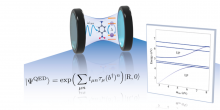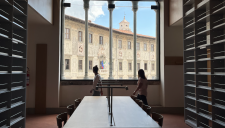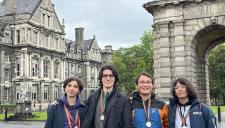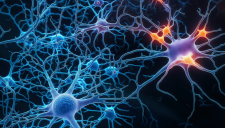An international team of researchers - for Italy, of Scuola Normale Superiore (SNS) and Istituto per i Processi Chimico-Fisici of CNR (IPCF-CNR) in Pisa - has demonstrated that properties of molecules undergo large changes when interacting with quantized electromagnetic fields in optical cavities. The work has now been published in Physical Review X.
Pisa, 7 december 2020
Using novel theoretical methodologies and computational simulations, an international team of researchers - for Italy, of Scuola Normale Superiore (SNS) and Istituto per i Processi Chimico-Fisici of CNR (IPCF-CNR) in Pisa - revealed that the ground- and excited-state chemistry of molecules can be modified by a confinement in space. The work, published in Physical Review X, show how the transfer of electrons inside the system can be controlled by modulating the frequency of the cavity field. The developed methodologies can have profound impact on several chemical and technological applications, such as photovoltaics, photochemistry, and optoelectronic devices.
Cavity quantum optics deals with the interactions of photons and molecules inside an optical cavity, i.e., in the region between two closely spaced mirrors. Perfect optical cavities can only support certain frequencies of light. In addition, the intensity of the associated electromagnetic field is enhanced by the confinement. No such energy restrictions and no such enhancements apply to photons outside of the cavity, and this leads to profound changes in behavior when molecules are placed inside an optical cavity. In this situation, photons and molecules can couple and form new hybrid states known as polaritons. Importantly, these hybrid states exhibit properties of both the molecules and the photons, meaning that their chemical behavior can be manipulated optically, e.g., by tuning the photon energy and the cavity geometry. Hence, cavities offer an entirely new lever for controlling molecular properties.
The only method that treats electrons and photons at the same level of quantization is quantum electrodynamical density functional theory, which is limited to situations where electrons and photons are uncorrelated. However, the electron-photon correlation is crucial for capturing changes in molecular properties, even qualitatively.
The work by Tor Haugland, PhD student at the Norwegian University of Science and Technology, and colleagues, represents the first ab initio theory that incorporates strong electron-photon correlation explicitly in a coherent and systematically improvable way. They extended the well-established coupled cluster theory for electronic structure to include quantum electrodynamics. Using the new framework, the researchers showed that ground state potential energy surfaces are modified by the cavity close to conical interactions. This can have large impact on the relaxation pathways and the photochemistry of molecules, and in materials science.
The team is composed of researchers from several European institutions: in addition to Scuola Normale Superiore and Istituto per i Processi Chimico-Fisici of CNR, both in Pisa (Italy), Norwegian University of Science and Technology (NTNU) in Trondheim (Norway), and Max Planck Institute for Structure and Dynamics of Matter (MPSD) in Hamburg (Germany).
Source publication:
“Coupled Cluster Theory for Molecular Polaritons: Changing Ground and Excited States”, Tor S. Haugland, Enrico Ronca, Eirik F. Kjønstad, Angel Rubio, Henrik Koch, Phys. Rev. X, 10, 041043, (2020).













